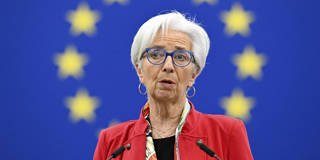Monetary policymakers, particularly in Europe, seem to have concluded that the risks of doing too little to tighten monetary conditions are too high, and it is better to err on the side of over-tightening. But there are good reasons to consider a more patient approach to inflation.
LONDON – Headline inflation is falling fast in the United States and the eurozone, following a succession of sharp interest-rate hikes by the US Federal Reserve and the European Central Bank. But monetary policymakers on both sides of the Atlantic have made it clear that they are not done yet. Are they going to go too far?
Core inflation, which is still running at around 5% in the the US and the eurozone, remains a major cause for concern. Central bankers fear that, given a resilient labor market, high core inflation (which excludes food and energy prices) risks fueling a wage-price spiral and a de-anchoring of inflation expectations. As we learned in the 1970s, this could make inflation very difficult – and costly – to tame, with central banks facing the related challenge of regaining lost credibility.
Given this, policymakers seem to have concluded that the risks of doing too little to tighten monetary conditions are simply too high; better to err on the side of over-tightening. The ECB has expressed this view with particular clarity. But the ECB must not underestimate the risks, both to the eurozone economy and its own reputation, of being wrong. And wrong it may well be.

LONDON – Headline inflation is falling fast in the United States and the eurozone, following a succession of sharp interest-rate hikes by the US Federal Reserve and the European Central Bank. But monetary policymakers on both sides of the Atlantic have made it clear that they are not done yet. Are they going to go too far?
Core inflation, which is still running at around 5% in the the US and the eurozone, remains a major cause for concern. Central bankers fear that, given a resilient labor market, high core inflation (which excludes food and energy prices) risks fueling a wage-price spiral and a de-anchoring of inflation expectations. As we learned in the 1970s, this could make inflation very difficult – and costly – to tame, with central banks facing the related challenge of regaining lost credibility.
Given this, policymakers seem to have concluded that the risks of doing too little to tighten monetary conditions are simply too high; better to err on the side of over-tightening. The ECB has expressed this view with particular clarity. But the ECB must not underestimate the risks, both to the eurozone economy and its own reputation, of being wrong. And wrong it may well be.